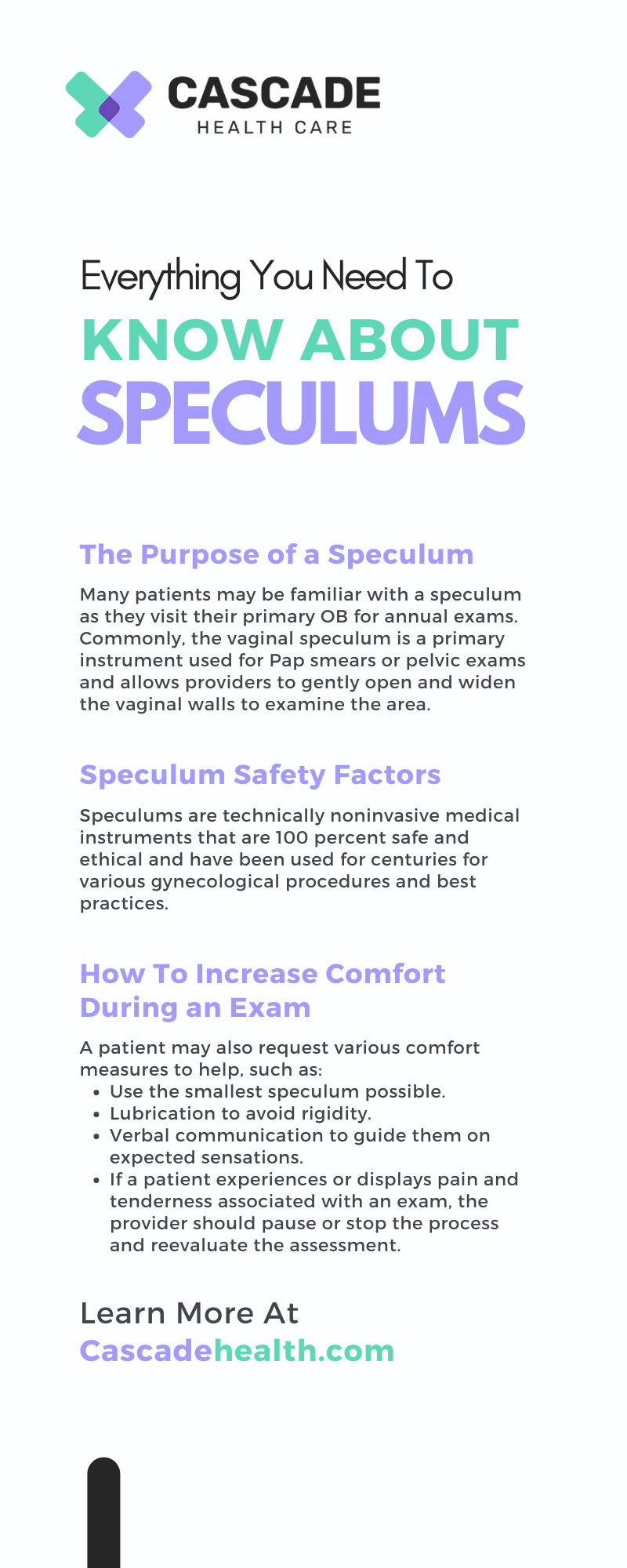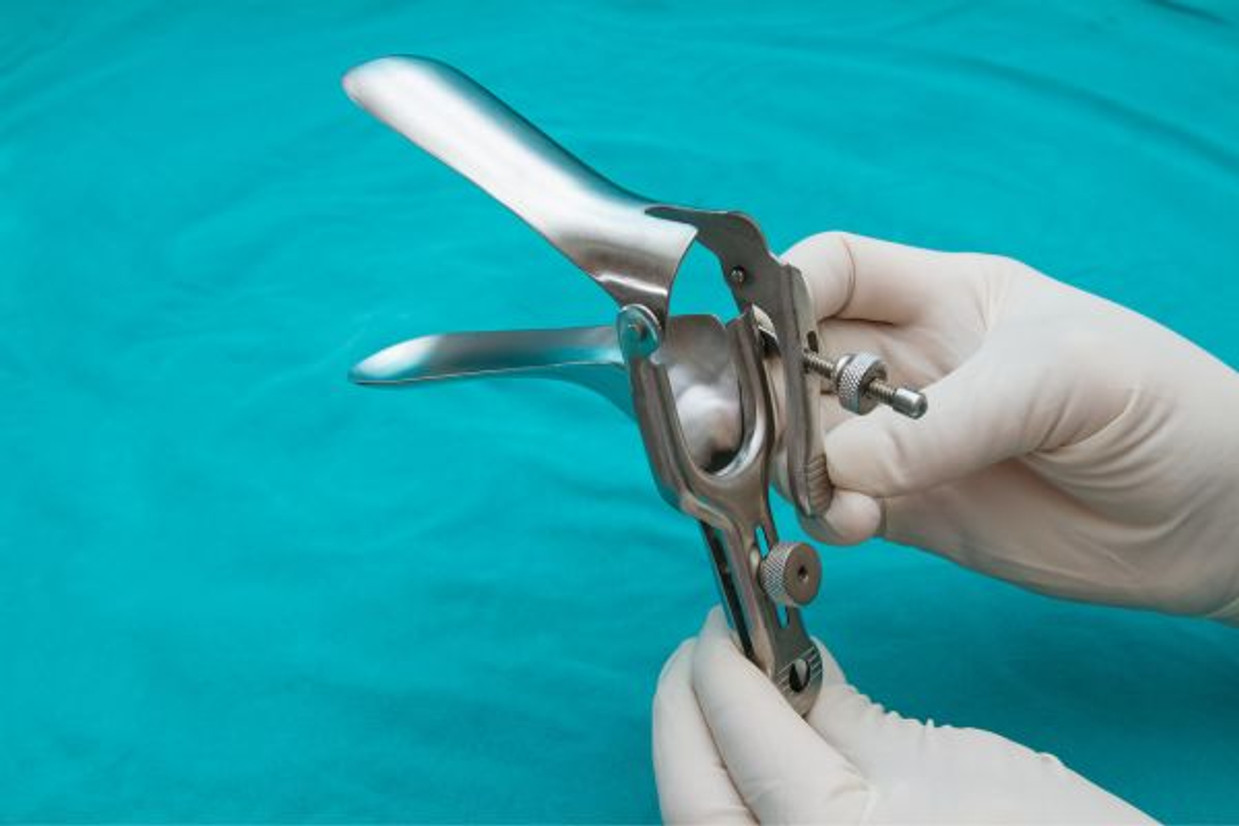Everything You Need To Know About Speculums
There is a wide range of medical instruments and tools that many are familiar with, whether patient or provider. For gynecological care, patients understand they will need to lie back on the table and undergo a reproductive health examination annually, regardless of sexual or childbearing history. The best way for patients and providers to go through these critical exams comfortably is through the use of a vaginal speculum. Here we explore everything you need to know about speculums, including the different types and uses.
The Purpose of a Speculum
Many patients may be familiar with a speculum as they visit their primary OB for annual exams. Commonly, the vaginal speculum is a primary instrument used for Pap smears or pelvic exams and allows providers to gently open and widen the vaginal walls to examine the area.
The speculum makes it easier for the provider to check for visual irregularities, cervical health, and any growing abnormalities. It’s also common for the provider to collect a small sample of cervical cells for testing to detect any signs of cancerous or abnormal cell growth.
In addition to routine examinations, providers can use the collected cells and information to determine if a patient needs a follow-up procedure. These procedures would rectify the health of the cervix as it relates to the outcomes of an exam and offer better vaginal health to the patient.
If the speculum is inserted for an extended period, the patient will undergo anesthesia. These procedures typically include a vaginal hysterectomy, LEEP, endometrial ablation, D&C, and others as a provider deems necessary to the health and outcomes of a patient.
Speculum Variations
Not all bodies are the same size, shape, or of the same lifestyle experiences. For this reason, speculums come in a wide range of sizes so providers can choose the most feasible option for each patient. It’s critical the speculum fits the vaginal walls and canal optimally for patient comfort and accurate results. For example, choosing a pediatric-sized speculum for an adult mother would be a disservice to her exam processes and may not provide enough visual field to the provider.
Below we will explore a few speculum variations and provide everything you need to know about using each one.
Graves Speculum
One of the most-used speculums today is a Graves speculum. These are excellent choices for patients with an increased elasticity in the vaginal walls or a longer canal structure. Typically, someone who has recently or subsequently given birth will receive an exam with the Graves speculum as the vaginal canal has experienced a slight structural change. Additionally, Graves speculums come in various sizes and are a provider’s preference for biopsies or colposcopies.
Huffman Speculum
A Huffman speculum is the ideal choice for patients who have not yet experienced intercourse or childbirth. This speculum is larger than a pediatric variation but much smaller than the commonly used Pederson or Graves. Providers commonly use the Huffman speculum on teenagers needing vaginal exams with guardian consent.
Pederson Speculum
Providers working with patients who have not given birth but are sexually active will almost always choose a Pederson speculum. These are another of the most-used choices in OB care and also come in a range of sizes. The Pederson works for a range of adult-aged patients, given their sexual history and childbearing experiences. It’s essential to be forthcoming with providers to ensure the speculum is appropriate and comfortable.
Pediatric Speculum
Though the name suggests a pediatric speculum is for children, commonly, providers do not use them on children. Instead, patients who have not experienced intercourse or childbirth or are postmenopausal will require a pediatric speculum because it is shorter in length and narrower in width. The vaginal canal typically cannot tolerate a larger speculum without intercourse experiences or after menopause because of the sensitivities and structural changes that occur.
Suppose a patient suspects they may be more or less comfortable with a speculum variation. In that case, the patient and the provider need to discuss best practices regarding optimal examination outcomes.
Speculum Safety Factors
Many question the safety of speculum use because it is inserted vaginally across patients. Speculums are technically noninvasive medical instruments that are 100 percent safe and ethical and have been used for centuries for various gynecological procedures and best practices.
Choosing the correct speculum variation per the patient’s health history and outcomes is a significant part of ensuring patient safety and comfort. Each speculum experiences industry-grade sterilization before and after each use to ensure zero-bacteria transmittance across patients and uses. During the exam, the speculum will stretch the vaginal canal for provider viewing, but once the provider removes the speculum, the vaginal canal will return to normal without further changes.
How To Increase Comfort During an Exam
Patients will experience a certain level of discomfort, whether it’s their first or 50th pelvic exam or Pap smear. The vulnerability required to take on gynecological care forces patients to elaborate on their sexual and health history intimately. However, it’s an essential part of ensuring ideal comfort during speculum use.
Providers can use the provided information to choose the most feasible speculum size and range in the patient’s best interest. Patients may also raise concerns or elaborate on sensitivities to ensure the provider can assist with their comfort as best as possible. A patient may also request various comfort measures to help, such as:
- Use the smallest speculum possible.
- Lubrication to avoid rigidity.
- Verbal communication to guide them on expected sensations.
It’s essential to note that if a patient experiences or displays pain and tenderness associated with an exam, the provider should pause or stop the process and reevaluate the assessment.
Cascade Health Care is committed to providing the reproductive health community with industry-leading and high-quality surgical-grade instruments, from speculums to forceps and everything in between. Our team can offer your OB clinic or practices a range of specula to assist patients from any sexual background or birth experience, as we honor all gynecological care demands. Shop our complete selection of instruments, or connect with a member of our team to learn more!

Recent Posts
-
Assessing Musculoskeletal Blood Flow Using Dopplers
When it comes to diagnosing and managing conditions related to musculoskeletal blood flow, precision
-
How To Talk to a Patient About Their Birth Plan
When supporting parents-to-be, discussing their birth plan is a crucial element of providing patient



